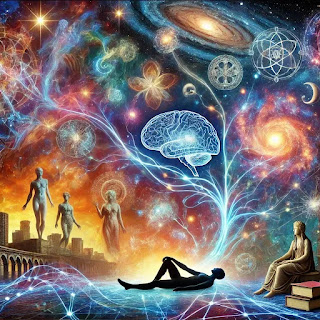Why Do We Cry?
Crying is a complex emotional and physiological response that can occur for various reasons, driven by biological, psychological, and social factors. Below is an exploration of why humans cry from different perspectives:
1. Biological Aspect:
Tear Types: Humans produce three types of tears:
*Basal tears keep the eyes lubricated and are constantly produced.
*Reflex tears are released when the eyes are irritated (e.g., from smoke or onions).
*Emotional tears are triggered by strong emotions such as sadness, happiness, or frustration.
Hormones: Emotional tears contain higher levels of stress hormones like adrenocorticotropic hormone (ACTH), which may explain the relief some people feel after crying, as crying could help flush out these chemicals.
Pain Relief: Crying triggers the release of endorphins, the body's natural painkillers, and oxytocin, which promotes relaxation and well-being, providing a natural soothing effect.
2. Psychological Aspect:
Emotional Expression: Crying is often a response to intense emotions such as sadness, joy, frustration, or empathy. It can help a person process their feelings and make sense of them.
Stress and Tension Relief: Crying can act as a release valve, helping to reduce pent-up emotional energy. It is a way to cope with overwhelming feelings and stress.
Developmental Impact: Crying serves as a communication tool for infants who cannot speak, signaling discomfort, hunger, or fear. As adults, while we cry less often, it still serves as an expression of emotional vulnerability.
3. Social and Cultural Aspects:
Communication and Connection: Crying can signal to others that we need help, support, or comfort. In social settings, it often elicits empathy from those around us and helps strengthen social bonds.
Cultural Influence: How people perceive crying can vary by culture. In some cultures, crying may be seen as a sign of weakness, while in others it may be viewed as a natural and healthy emotional response.
Gender Differences: Social norms around crying also differ by gender. For instance, men are often socialized to suppress tears, while women may be more openly encouraged to express their emotions through crying.
4. Emotional Triggers for Crying:
Sadness and Loss: The most common reason for crying is experiencing grief or sadness, such as the death of a loved one or a breakup.
Joy and Overwhelm: People can cry from overwhelming happiness or when experiencing deeply moving or beautiful moments.
Frustration and Helplessness: Crying out of frustration, particularly when faced with a situation that seems beyond control, is also common.
Empathy: Observing others in distress can trigger empathetic crying, where you cry in response to someone else’s suffering or joy.
5. Health Benefits of Crying:
Emotional Balance: Crying helps in emotional regulation by allowing individuals to process intense emotions in a manageable way.
Physical Relief: Since crying releases toxins from the body and helps reduce stress, it can lead to improved mood and emotional clarity after the tears have passed.
Better Sleep and Relaxation: Crying can promote sleep by reducing stress levels and helping the body to relax.
In summary, crying serves a range of functions from physiological regulation to emotional expression and social bonding. It's an essential part of human experience, allowing for release, connection, and sometimes healing.






Comments